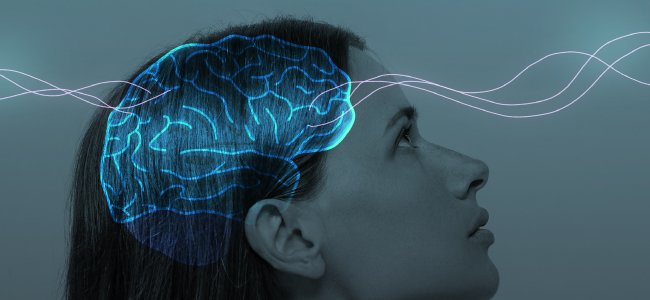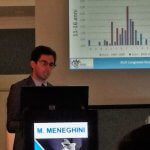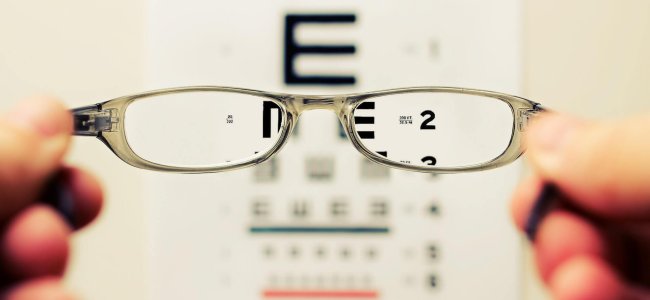The Nystagmus test in childhood

Nystagmus is a rhythmic, involuntary, oscillatory movement of the eyes. The oscillation can occur with a rapid, slow frequency or consist of a combination of rapid and slow movements.
Physiological Nystagmus is an involuntary eye movement that is part of the vestibular-ocular reflex and has the role of stabilizing images on the retina during a rapid head movement.
In pathological Nystagmus, the ocular oscillation consists of a repeated series of saccadic intrusions, with varying frequency and intensity, that create instability in visual movement and difficulty in fixation. These movements can reduce vision, and affect depth perception, balance and coordination.
Pathological nystagmus results from diseases affecting the cortex, anterior visual tracts, brainstem, cerebellum and peripheral vestibular apparatus. Sometimes patients who visit the ophthalmologist with a nystagmus problem report their eyes “twitching” or “dancing”.
The nystagmic tremors may increase or decrease in certain head positions and likewise may present as fixed (manifest nystagmus) or latent (latent nystagmus).
The latter is often associated with childhood strabismus. Pathological nystagmus results from diseases affecting the cortex, anterior visual tracts, encephalic trunk, cerebellum and peripheral vestibular apparatus.
The characteristics that define nystagmus are:
- direction: horizontal, vertical, torsional, mixed
- amplitude: a measure of the distance traveled by the eyes during each phase.
- frequency: the number of oscillations per minute.
- intensity: the result of multiplying amplitude by frequency.
The nystagmus most commonly seen in clinical practice is horizontal.
The frequency of nystagmus in childhood is roughly estimated at 17 cases per 10,000. We can distinguish two categories of nystagmus: infantile nystagmus, which usually occurs in the first 3-6 months of life, and acquired nystagmus, which tends to appear at a later stage (after 6 months of life).
Types of infantile nystagmus
Most types of nystagmus occurring in childhood are considered benign as they are isolated, however, it is incorrect to call them ‘non-neurological’ as they always involve a central component in the onset.
There are several types of benign nystagmus usually observed during childhood.
The most common types consist of:
- Infantile Nystagmus Syndrome (INS)
- Idiopathic Infantile Nystagmus (NII)
- Fusion Developmental Impaired Nystagmus Syndrome (FMNS)
- Spasmus Nutans Syndrome.
Infantile Nystagmus Syndrome (formerly known as Congenital Nystagmus) occurs at birth or in the first 6 months of life typically in patients with ocular motility disorders. The cause is still unknown.
The oscillations are involuntary, jointed movements and frequently occur in a horizontal direction. They may be associated with albinism, achromatopsia and optic nerve hypoplasia.
Characteristic is the presence of the ‘null point’, a direction of gaze in which the intensity of nystagmus is reduced and vision improves; this position is usually in convergence and certain situations may also occur in the primary position, so that the patient does not assume a compensatory head position.
It is sometimes associated with strabismus and high refractive defects.
Oscillopsia does not usually occur, except in rare cases where nystagmus is aggravated due to a change in the associated pathology.
If motor instability is present, oscillation of the head (head nodding) is frequently observed.
Idiopathic infantile nystagmus develops in the first three months of life, but is rarely present from birth. Visual acuity is typically low and does not go beyond 5/10.
NII can be sporadic or hereditary (7-30%). This type of nystagmus is called FRMD7 gene-related infantile nystagmus (FIN). It can present with very variable angle infantile exotropia, the so-called ‘nystagmus block syndrome’, which accounts for 1-3% of all forms of infantile exotropia.
Altered fusion development nystagmus syndrome (FMNS), formerly referred to as latent or manifest-latent, involves 20% of infantile forms and often affects children with strabismus, (typical of essential infantile esotropia).
All patients have reduced or absent fusions, with the absence or presence of binocular vision abnormalities. It is a benign nystagmus that begins in early childhood, with involuntary bilateral conjugate shaking and is easily observed by occluding one eye.
The direction of the shakes is typically horizontal, as in INS, and always beats towards the fixating eye; for this reason, the patient often assumes a PAC (abnormal head position) in adduction, to rotate the head to reduce the amplitude of the shakes.
Spasmus Nutans is a rare (idiopathic) syndrome characterized by the triad: nystagmus, torticollis and head nodding.
It begins between 4 and 12 months of age and has a pendular waveform, variably discontiguous, asymmetrical, often intermittent, and with a high frequency of shocks. It is greater in the abducted eye, predominantly horizontal, but may be vertical or mixed. It is not yet clear whether the oscillatory movement of the head may have a compensatory function about nystagmus. CT and MRI scans are normal as is the ocular fundus.
It may be associated with strabismus and amblyopia. It disappears around the age of 4-5 years, but may persist beyond the age of 8 years. Some tumor forms of the visual pathways can mimic the characteristics of spasmus nutans; therefore Neuroimaging should always be requested.
These different forms of nystagmus in childhood do not respond to the same treatments, which is why each case must be assessed individually by the specialist.
The orthoptic examination
Orthoptic assessment is essential in children presenting with nystagmus. It is essential to assess visual acuity, the presence of strabismus and to study ocular motility.
This is required because of the higher prevalence of strabismus in the presence of nystagmus in children, reported to be between 20 % and 50 %. In addition, the position of the head and the possible presence of ocular torticollis must also be investigated. Children with idiopathic nystagmus rarely present strabismus, whereas visual misalignment is common in retinal dystrophies and albinism. Bilateral optic nerve hypoplasia is a high risk of developing strabismus with nystagmus.
During orthoptic tests, the patient’s cooperation is of paramount importance.
Depending on the case, further clinical investigations should be requested if, due to the age of the child, a differential diagnosis between the various forms of nystagmus must be made.
In the presence of nystagmus, and therefore oscillatory movements, it is more appropriate to quantify the deviation by observing the corneal reflexes and to assess the possible K-angle, given the difficulty of performing a cover test.
Therapy and treatment of Nystagmus
Treatment goals include improving visual acuity, reducing the amplitude and frequency of nystagmus, and correcting or improving the torticollis.
Medical treatment
- Optical: glasses and contact lenses;
- Prisms: are employed to enhance coordination between the eyes when dealing with horizontal nystagmus accompanied by torticollis. Their purpose is to improve the alignment of both eyes in the primary gaze position.
In addition, low-power prisms with an external base (bitemporal) can be used to promote fusion convergence, reduce the amplitude of shaking and improve visual acuity.
In situations where an uncomfortable and unsightly abnormal head position (PAC) and jerk blockage occur, prisms with ipsilateral right or left base can be used.
Prisms should be mounted with the base counter lateral to the preferred direction of gaze.
- Treatment of amblyopia: by optical or pharmacological penalization in the eye with better visuals.
Surgical treatment
Before considering it, it must be assessed whether there has been an improvement in nystagmus during the developmental period. The indications, surgical approach, and muscles involved vary depending on the type of nystagmus and the associated torticollis.
The main objective of surgery is to move the eyes from the peripheral position of blockage to a central position of gaze to prevent torticollis. Both ocular torticollis and associated strabismus can be surgically treated.
Nystagmus is a complex clinical condition that requires each case to be individualized. Each surgical evaluation should be carefully reviewed by one’s ophthalmic physician and after a complete orthoptic evaluation to best study ocular motility.
Bibliography
- The Diagnosis and Treatment of Infantile Nystagmus Syndrome (INS) – The Scientific World JOURNAL (2006) 6, 1385–1397) ISSN 1537-744X; DOI 10.1100/tsw.2006.248
- Management of nystagmus in children: a review of the literature and current practice in UK specialist services – Eye (2020) 34:1515–1534; DOI 10.1038/s41433-019-0741-3

You are free to reproduce this article but you must cite: emianopsia.com, title and link.
You may not use the material for commercial purposes or modify the article to create derivative works.
Read the full Creative Commons license terms at this page.






